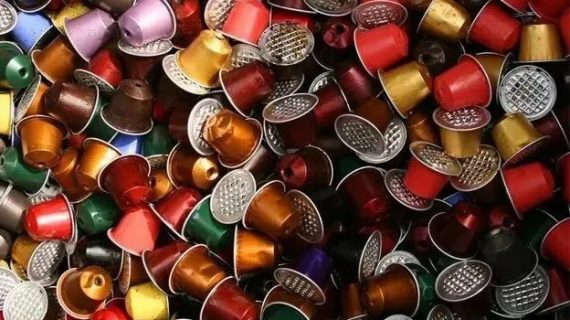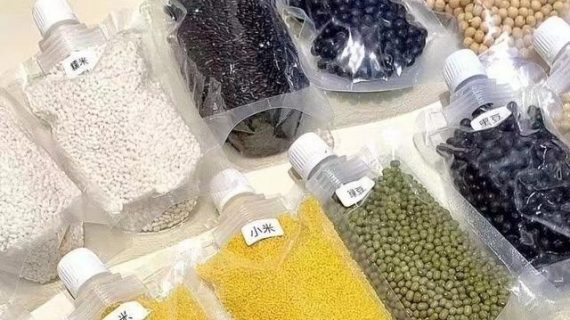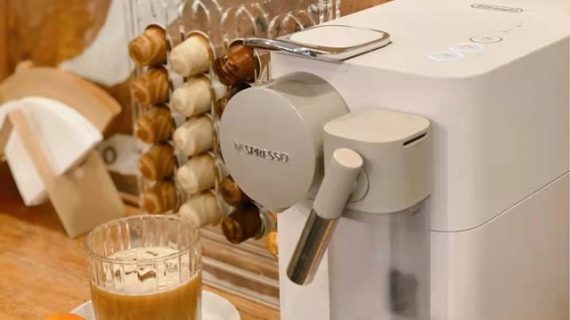Nestlé is using capsule coffee against Luckin
In the 1980s and 1990s, Nestlé’s instant coffee advertisements began to spread on televisions. A group of Hong Kong-rich young people, playing musical instruments and drinking coffee, have melancholy and bright faces on their faces. With the ad slogan “It tastes great”, Nestlé coffee has become a household name for a time. During the holidays, canned Nestlé instant coffee is a great gift.
Twenty years later, the tall aftermath created by Nescafe Coffee still affects consumers’ perception of coffee.
1. The growth dilemma of instant coffee
If you have to ask Yu Linlin, a young woman in the county seat, under what circumstances would she buy instant coffee, her answer is “when it’s pretending.”
Occasionally visiting the supermarket, Yu Linlin would symbolically grab two cups of instant coffee. Regardless of the brand, the taste doesn’t matter much. The point is that drinking coffee is more compelling than other beverages. Even if the unit price for the whole box is cheaper, she would rather spend 2 yuan per unit. “The whole box is expensive, I can’t finish it.”
Compared with the restraint of offline instant consumption, online impulsive consumption has an obvious hoarding nature.
Qi Yue, who also lives in this county, bought instant coffee because he couldn’t resist Taobao’s promotional magic. Recently, she and her colleagues put together an order and bought two Japanese UCC instant coffees on Tmall. The two coffee pages are marked with the words “year-end special buy one get one free” and “0 yuan for the second order”. “Buy whichever has a discount.”
In China, many people first came into contact with coffee, starting with instant coffee from Nestlé. However, Nestlé is not the first coffee brand to enter. In 1984, Maxwell Coffee (later renamed Maxwell Coffee) made the first shot in China’s instant coffee market. Four years later, the belated Nestlé established the Dongguan Nestlé Company in Dongguan and officially entered China.
Relying on TV marketing and a strong offline distribution system, Nescafe came from behind and became the first brother in the Chinese coffee market. Although most of the first impressions of coffee after the 70s, 80s, and 90s come from Nestlé, there are exceptions.
Amelie, who was born in 1993, has the exact opposite experience. In 1999, 6-year-old Amelie saw her parents purchase a coffee machine for the first time. Thanks to this machine, her first cup of coffee was freshly ground coffee. This year was also the first year Starbucks entered China.
In January of the same year, Starbucks opened its first store in mainland China in Phase I of Beijing International Trade Center and officially entered the Chinese market. After joining the work, Amelie did not listen to her parents’ evaluation of the unhealthy of instant coffee, and switched to instant coffee. “The main reason is convenience. It can be drunk anywhere, the taste is no worse than freshly ground coffee, and the price is cheaper. On average, it costs five or six yuan per bag.”
Convenience is the main consumption point of instant coffee for urban white-collar workers.
Compared with young people in small towns, urban white-collar workers have a clear preference for instant coffee consumption. Amelie’s selection of instant coffee is based on the country of origin. “I like coffee beans from Southeast Asia and Morocco. Morocco has a strong taste, sour and fragrant. Southeast Asia is slightly sweeter, but also fragrant.”
More and more Chinese people are starting to drink coffee. At the same time, as a special drink with dependence and addiction, coffee is also working hard to make itself an indispensable part of Chinese people’s daily life.
According to a data report released by the China Business Industry Research Institute at the end of 2018, China’s coffee market consumption has grown steadily from 2014 to 2018. The total coffee consumption in 2014 was 21.81 million tons, an increase of 34% year-on-year; the total consumption in 2017 was 38.25 million tons, an increase of 29% year-on-year.
Coffee beans are processed into green beans, roasted, extracted, and cooked into a cup of drink. According to different consumption methods, coffee can be divided into instant coffee, ready-to-drink coffee, and freshly ground coffee. According to the report, from the perspective of market segments, instant coffee dominates the Chinese coffee market, accounting for 71.8%; followed by freshly ground coffee, accounting for 18.1%, followed by ready-to-drink coffee, accounting for 10.1%. Among them, Nescafe accounts for more than 70% of instant coffee.
However, Nestlé, who is a big brother of instant coffee, is not comfortable. In more than 30 years of continuous iteration and upgrade of consumption, Nescafe coffee is no longer as rare as McDonald’s and KFC, nor can it be expected that instant coffee will remain unchanged in the hearts of Chinese coffee consumers.
Like Coca-Cola’s pricing strategy in China, which entered the Chinese market earlier, the price of Nestlé’s instant coffee has risen slightly over the past 30 years. More than a decade ago, Nestlé’s instant coffee retail price of one yuan a piece, more than ten years later, only a price increase of less than 50 cents.
In April 1981, Coca-Cola’s Beijing Wulidian Factory was officially put into production. The price was 0.45 yuan a bottle, which was three times that of Arctic Ocean soda. At that time, the average wage of workers was about 40 to 50 yuan, and their monthly wages could only buy 100 bottles of Coke. Coke was a well-deserved luxury. Today, Coca-Cola for less than 3 yuan has become a popular drink.
This set of effective market development strategies is based on the continuous expansion of market share. Once the market growth rate slows down, the company’s performance will face the dilemma of continued decline. And Nestlé has had such worries since 2017.
In 2017, Nestlé Coffee opened a pop-up store in Sanlitun. In an interview with the media, Ge Wen, senior vice president of Nestlé’s coffee business in China, said that in the past three years, the market share of instant coffee in China has continued to increase year by year, but 2017 has fallen back to single-digit growth.
Launching new products is the best way to revive the market. Nestlé does exactly that.
In the Chinese market, Nescafe’s adjustments can be summarized in two directions, one is quality improvement, and the other is gradual innovation.
In 2018, Nestlé upgraded a product, Nestlé Gold Instant Coffee, which was launched around 2002. In Nestlé’s positioning, this instant coffee is “like a cup of freshly ground coffee in a cafe.” Nescafe Gold Instant Coffee is imported from Switzerland and uses Arabica coffee beans-the same coffee beans commonly used in coffee shops.
Nestlé is also experimenting with some new categories on online channels. For example, a sucrose-free coffee has a very different taste than the classic 1+2 instant coffee from Nestlé, and it has no sweetness at all. It also replaced the green packaging to make the younger generation of consumers who are pursuing health look more favorable. There is also an upgraded version of instant coffee, “Nong Zhen Symphony”, which uses imported coffee beans and changes the ratio of toffee coffee. These products have been pre-sold on e-commerce channels for a period of time before they are officially launched on the market.
In early 2018, Nestlé established an innovation incubator team in China, hoping to quickly respond to the needs of the Chinese market and develop new products in a targeted manner. It is also another market where Nestlé has set up incubators to accelerate innovation after the United States.
On January 18, 2019, Nestlé launched an open innovation platform named “HENRi@Nestlé” (HENRi@Nestlé), which aims to attract individuals or companies with innovative products and design to participate in Nestlé’s innovation projects. .
Lin Shangming, Vice President and Head of Strategy and Business Development at Nestlé Greater China, said, “Nestlé will invest US$50,000 in each challenge project and appoint an internal Nestlé employee as a consultant to promote the realization and operation of the pilot project.
Judging from the current situation, these two investments have not yet received significant results.
Of course, capital operation is the fastest way to solve the problems of existing products. On August 28, 2018, Nestlé obtained the global permanent marketing right to market Starbucks products outside of Starbucks stores at a price of US$7.15 billion. Nestlé’s Nespresso and Dolce Gusto coffee capsule series will use the Starbucks brand.
A year later, just in early August this year, Nestlé and Starbucks launched a new series of “Starbucks Home Enjoy Coffee” for Chinese consumers and provided a “Starbucks Coffee Service” overall coffee solution for out-of-store drinking scenes.
On August 1, these 21 “Starbucks Home Enjoy Coffee” products were launched on Tmall, including roasted coffee beans, ground coffee powder, and the first one that is compatible with Nespresso and Nescaféolce. Gusto) Starbucks coffee capsules developed in conjunction with coffee machines, this time the joint uses capsule coffee as the main product.
The approach of Nestlé and Starbucks is to build a moat for each other and to warm up in advance in the ever-changing Chinese coffee market.
2. A new coffee market with three pillars
Contrary to the crisis realized by the two major foreign giants, Nestlé and Starbucks, the fast-moving giants who are still outside the coffee market choose to find ways to enter the coffee market, even if it is only a fringe market.
In early August, in the Hualian Supermarket in Changying, Beijing, a new product promotion attracted a lot of attention. A product with a bottle that is very similar to Coca-Cola is next to ordinary Coca-Cola. If you don’t pay attention to it, it is difficult to find that it is different from ordinary Coca-Cola.
Tighten the cap and shake the bottle, it will spray a lot of foam when the cap is opened. The taste is not much different from ordinary Coke. But after feeling the sweetness of Coke, you can still find a bitter and mellow coffee staying power on the tip of your tongue.
This is actually Coca-Cola’s new carbonated coffee drink “Coffee+” in the mainland. On July 17, Coca-Cola announced its launch through its social accounts. This is after the introduction of Qiaoya Coffee from Japan in 2014 and the acquisition of the chain brand Costa in 2018, Coca-Cola re-entered the coffee track again.
The Coca-Cola family is not the only one taking aim at this track. Two months ago, after crossing the border with tea and juice drinks, Nongfu Spring also put a foot into the coffee track and launched a drink with a strange name—”tank” coffee. The official explanation is that charcoal represents the fire and heat in the coffee roasting process, and different ice means the process of low-temperature extraction.
Also this summer, the dairy giant Yili was also involved in the field of ready-to-drink coffee for the first time.
On July 12, Yili announced the launch of its new product Saint Ruisi coffee, officially entering the coffee field across the border. A few days after the new product was launched, Chen Linong, a traffic niche, was also invited as a spokesperson.
Counting Nestlé, Starbucks, Suntory, Uni-President, Weiquan, etc., which have been working hard for many years, most of the mainstream beverage fast-moving companies have entered the ready-to-drink coffee market. Although ready-to-drink coffee does not account for a large proportion of the entire coffee market, sustained growth has been attractive enough to allow fast-moving giants to test on the edge.
In addition to these competitors in different areas of the coffee industry, Nestlé also needs to face the sudden emergence of niche brands. The person in charge of Nestlé’s online operations told the retail internal reference reporter that although Nestlé’s annual growth in Tmall and other channels still maintains double-digit annual growth, more and more new brands are segmenting the market. “The flexible response speed of small brands to the market cannot be matched by Nestlé as a large and complex company.”
In order to keep up with the response speed of small brands, Nestlé has also made some adjustments in its organizational structure. After Nestlé CEO Mark Schneider took over Nestlé, he abolished the seating arrangement for executive meetings and allowed everyone to sit as they please. This is quite rare in Swiss companies. He also plans to have an annual budget of 1.7 billion Swiss francs to develop products, such as new coffee supply methods. For example, adding nitrogen cold brew coffee to the product line.
But a phenomenon that cannot be ignored is that more and more consumers who have a clear understanding of coffee have chosen Haitao to show their taste for instant coffee. After Amelie drinks her favorite coffee in a boutique coffee shop, she searches for local instant coffee products on Taobao based on the origin of the coffee beans.
The data of overseas Taobao coffee purchased by Taobao explains this problem to a certain extent. According to Taobao Global Purchase Data, in the first half of 2019, the number of Haitao instant coffee consumers increased by 88% year-on-year, and total consumption increased by 51% year-on-year.
This time, Nestlé chose capsule coffee as the main product of its cooperation. On the one hand, it was because the past product innovations were too mild, and the market urgently needed a revolutionary new product to appear. On the other hand, it is based on the fact that among Nestlé’s coffee business, capsule coffee has the fastest growth. Senior managers of Nestlé’s two capsule coffee brands, Nespresso and Dolce Gusto, have disclosed to Jiemian News that these two businesses are growing at double digits, surpassing the overall Chinese market. “Medium single-digit growth.”
Coffee is the market under the spotlight at the moment. Nestlé chose to place this capsule coffee revolution on e-commerce platforms such as Tmall and JD. In addition to the relatively high-speed growth factors currently maintained by e-commerce platforms, it may also be looking for a source of energy. The platform for interactive communication with consumers will complete the goal of guiding consumption transformation before the real crisis arrives.
However, now that Nestlé wants to teach Chinese people to drink capsule coffee, is it as simple as before?
Amelie said that the biggest advantage of instant coffee is its convenience. Capsule coffee needs to be matched with a capsule coffee machine, which is troublesome to make. In addition, the taste is not greatly improved. She does not have much expectations for capsule coffee. For Yu Linlin and Qi Yue, capsule coffee machines ranging from hundreds to thousands have constituted the threshold for them to consume capsule coffee.
From the perspective of developed countries, when per capita GDP and consumption levels increase, people’s preference for coffee will gradually shift from instant to freshly ground. As a result, instant coffee will face a further decline. With the help of Internet technology, Luckin and other local Chinese companies have broken through the convenience and established window paper between freshly ground coffee and instant coffee, and the challenges faced by instant coffee have become more difficult.
By winning the right to operate Starbucks online coffee products, Nestlé has also won more time for itself to develop new products. As for whether Nestlé can develop revolutionary new products, it will take time to test.









